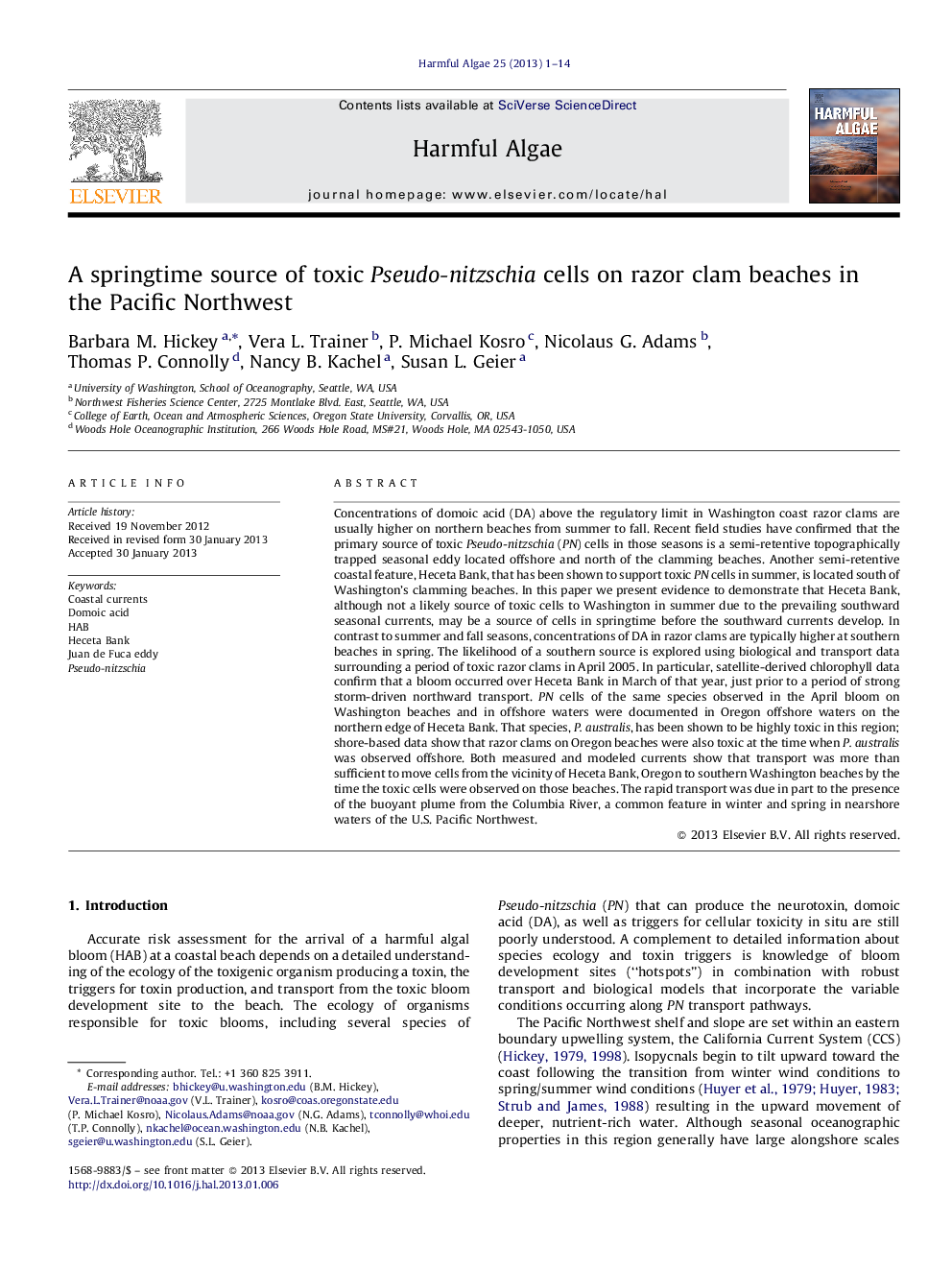| کد مقاله | کد نشریه | سال انتشار | مقاله انگلیسی | نسخه تمام متن |
|---|---|---|---|---|
| 4545477 | 1626946 | 2013 | 14 صفحه PDF | دانلود رایگان |

Concentrations of domoic acid (DA) above the regulatory limit in Washington coast razor clams are usually higher on northern beaches from summer to fall. Recent field studies have confirmed that the primary source of toxic Pseudo-nitzschia (PN) cells in those seasons is a semi-retentive topographically trapped seasonal eddy located offshore and north of the clamming beaches. Another semi-retentive coastal feature, Heceta Bank, that has been shown to support toxic PN cells in summer, is located south of Washington's clamming beaches. In this paper we present evidence to demonstrate that Heceta Bank, although not a likely source of toxic cells to Washington in summer due to the prevailing southward seasonal currents, may be a source of cells in springtime before the southward currents develop. In contrast to summer and fall seasons, concentrations of DA in razor clams are typically higher at southern beaches in spring. The likelihood of a southern source is explored using biological and transport data surrounding a period of toxic razor clams in April 2005. In particular, satellite-derived chlorophyll data confirm that a bloom occurred over Heceta Bank in March of that year, just prior to a period of strong storm-driven northward transport. PN cells of the same species observed in the April bloom on Washington beaches and in offshore waters were documented in Oregon offshore waters on the northern edge of Heceta Bank. That species, P. australis, has been shown to be highly toxic in this region; shore-based data show that razor clams on Oregon beaches were also toxic at the time when P. australis was observed offshore. Both measured and modeled currents show that transport was more than sufficient to move cells from the vicinity of Heceta Bank, Oregon to southern Washington beaches by the time the toxic cells were observed on those beaches. The rapid transport was due in part to the presence of the buoyant plume from the Columbia River, a common feature in winter and spring in nearshore waters of the U.S. Pacific Northwest.
Idealized transport of toxic Pseudo-nitzschia cells from semi-retentive offshore waters in the U.S. Pacific Northwest under three types of environmental conditions. Surface currents are shown with arrows. The notations “Barrier” and “Conduit” refer to the role of the Columbia plume in preventing HABs from reaching coastal beaches, or accelerating HAB transport along the coast, respectively. Razor clam beaches are shown in red.Figure optionsDownload high-quality image (165 K)Download as PowerPoint slideHighlights
► Offshore sources of harmful algal blooms can vary seasonally, depending on the direction of coastal currents.
► Heceta Bank, Oregon is a springtime source of harmful algal blooms to the Washington coast.
► River plumes are sometimes barriers, sometimes conduits for toxic cells being transported in coastal currents.
Journal: Harmful Algae - Volume 25, May 2013, Pages 1–14